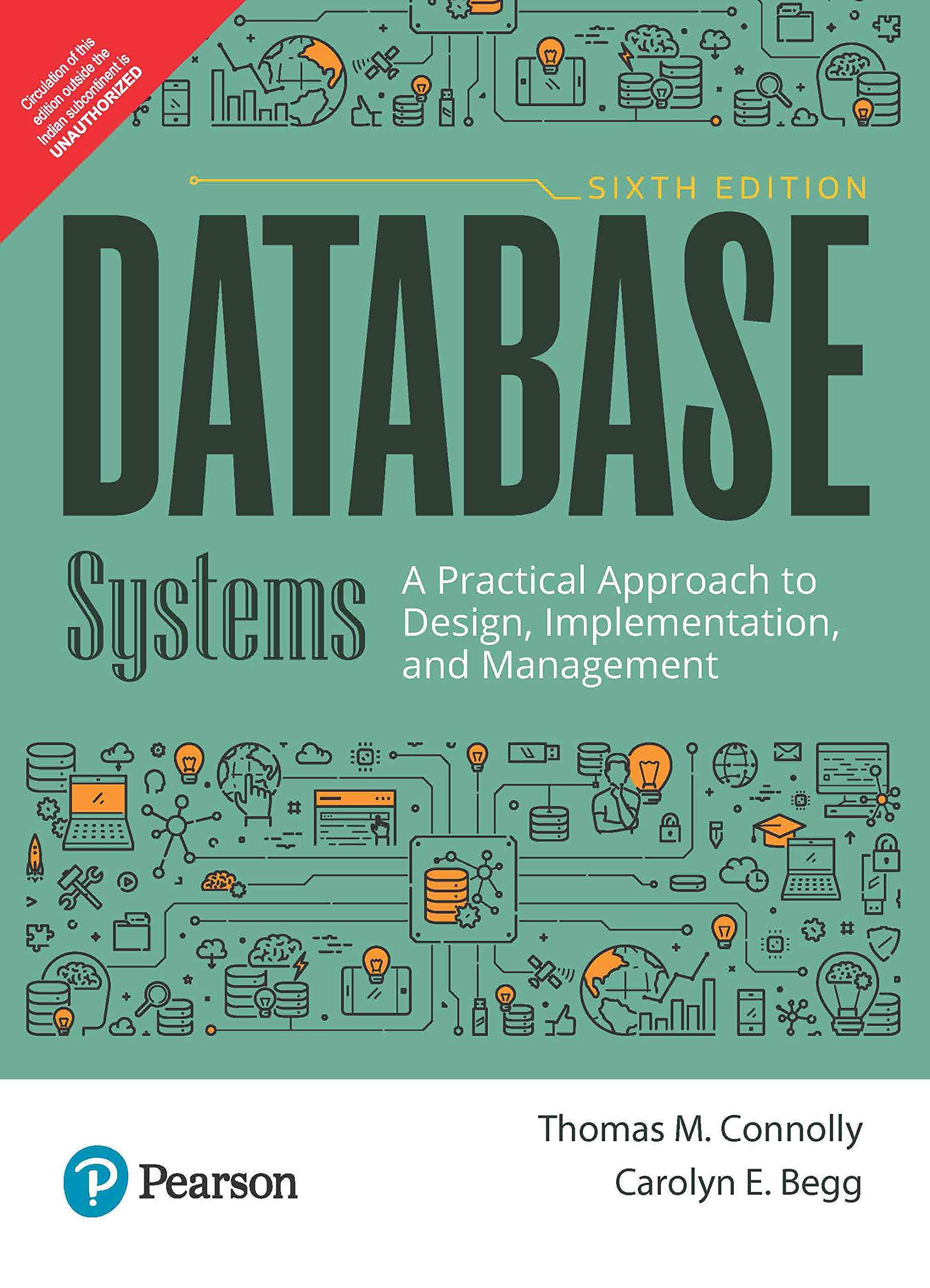Question
Indicate the answer choice that best completes the statement or answers the question. 1. Greater user involvement in the system development process usually results in
Indicate the answer choice that best completes the statement or answers the question.
| 1. Greater user involvement in the system development process usually results in _____.
|
| 2. Identify a typical example of a system requirement for the input category.
|
| 3. One of the main activities in the systems analysis phase is _____, which involves fact-finding to describe the current system and identification of the specifications for the new system.
|
| 4. The _____ phase of the SDLC includes four main activities: requirements modeling, data and process modeling, object modeling, and consideration of development strategies.
|
| 5. Which of the following is a typical example of a system requirement for the process category?
|
| 6. When preparing a representative sample from a list of 200 customers who complained about errors in their statements, a _____ might select every tenth customer for review.
|
| 7. Identify is a typical example of a system requirement for the performance category.
|
| 8. Rapid application development (RAD) relies heavily on _____.
|
| 9. When phrasing interview questions, a systems analyst should avoid _____ that suggest or favor a particular reply.
|
| 10. Which of the following is a typical example of a system requirement for the control category?
|
| 11. In the rapid application development (RAD) model in the accompanying figure, the _____ phase focuses on program and application development tasks similar to the SDLC.
|
| Critical Thinking Questions Case 4-2 Jerry has inherited an Excel sheet that lists all of the system requirements for his teams new project. But unfortunately, his predecessor did not label the requirements with categoriesor in some cases failed to categorize them correctly. He needs to take care of this so the requirements can be sorted correctly. |
| 12. Jerry knows that there were supposed to be three performance examples but he finds four in the spreadsheet. Which one of these is mislabeled as a performance example?
|
| 13. _____ is a fact-finding technique that can help a systems analyst understand how the current system is supposed to work.
|
| 14. _____ are important to a systems analyst who must work with people at all organizational levels, balance conflicting needs of users, and communicate effectively.
|
| 15. _____ is a planned meeting during which a systems analyst obtains information from another person.
|
| 16. Supporters of neutral locations for interviews believe that it _____.
|
| 17. In a(n) _____, team members prepare to lunge at each other to achieve their objectives.
|
| 18. In projects where it is desirable to obtain input from a large number of people, a(n) _____, such as that shown in the accompanying figure, can be a valuable tool.
|
| 19. The term _____ refers to a systems ability to handle increased business volume and transactions in the future.
|
| 20. If an interviewee gives only short or incomplete responses to open-ended questions, a systems analyst should _____.
|
| Identify the letter of the choice that best matches the sentence or definition.
|
| 21. If one of these is available, analysts can use it to develop models and enter documentation from the joint application development (JAD) session. |
| 22. These methods develop a system incrementally, by building a series of prototypes and constantly adjusting them to user requirements. |
| 23. One of its risks is that a system might work well in the short term, but the corporate and long-term objectives for the system might not be met. |
| 24. This is the overall diagram in business process modeling notation (BPMN) terminology. |
| 25. The creation of this representation is similar to drawing an organization chart. |
| 26. This provides various graphical tools, such as use case diagrams and sequence diagrams. |
| 27. This offers a better return on the initial investment because it will have a longer useful life. |
| 28. In determining this, one problem is that cost estimates tend to understate costs such as user support and downtime productivity losses. |
| 29. These are the kinds of questions that are useful when a systems analyst wants to understand a larger process or draw out the interviewees opinions, attitudes, or suggestions. |
| 30. Systems analysts use this kind of question when they want information that is more specific, or when facts must be verified. |
Step by Step Solution
There are 3 Steps involved in it
Step: 1

Get Instant Access to Expert-Tailored Solutions
See step-by-step solutions with expert insights and AI powered tools for academic success
Step: 2

Step: 3

Ace Your Homework with AI
Get the answers you need in no time with our AI-driven, step-by-step assistance
Get Started


